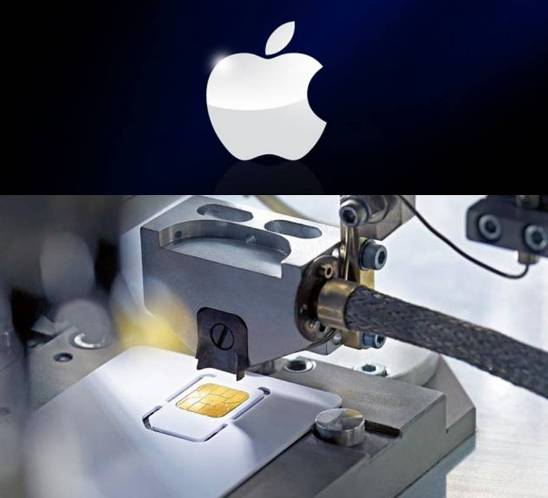 However, from an applicant’s point of view, patent quality (which becomes synonymous with value for an investor) will have increased. How? With examination quality reduced (meaning lower patentability thresholds) and throughput raised (meaning quicker patent processing), an applicant will have a greater incentive to increase the number of filings, and reduce the quality of a given application by splitting it into multiple applications. Clearly, in such a situation, the economic benefit intended by the founders of the patent system is not optimized. Thomas Jefferson (circa 1813), Director of the first US Patent Board, said:
However, from an applicant’s point of view, patent quality (which becomes synonymous with value for an investor) will have increased. How? With examination quality reduced (meaning lower patentability thresholds) and throughput raised (meaning quicker patent processing), an applicant will have a greater incentive to increase the number of filings, and reduce the quality of a given application by splitting it into multiple applications. Clearly, in such a situation, the economic benefit intended by the founders of the patent system is not optimized. Thomas Jefferson (circa 1813), Director of the first US Patent Board, said:
The fact is, that one new idea leads to another, and that to a third, and so on through a course of time until someone, with whom no one of these ideas was original, combines all together, and produces what is justly called a new invention.
Once we factor in concepts of Patent Portfolio Theory, the effects really begin to snowball. Wagner and Parchomovsky reconcile this “patent paradox” in which patent filings increase, while the expected value of each patent decreases. Using a synergistic “whole is greater than the sum of its parts” reasoning, they argue that aggressive patenting by firms as an IP strategy arises from the realization that “the true value of patents lies not in their individual worth, but in their aggregation into a collection of related patents – a patent portfolio.”
From a cost-benefit point-of-view, patent portfolios provide scale and diversity over individual patents, as well as flexibility in IP management and enforcement in patent litigation. Portfolio scale relates to how an aggregate of related patents provides broader IP rights than the combined total of the individual patent rights. Portfolio diversity (which counters scale) relates to the breadth of range in patent coverage and alignment gaps (the “Swiss cheese” effect of “maximally diverse” portfolios). Wagner and Parchomovsky write:
… the tension between scale and diversity suggests that effective patent portfolios will be carefully crafted affairs, where patenting decisions are made in light of these twin goals. This in turn suggests that patent portfolio construction is unquestionably a skill-oriented task, one that some firms will perform better (and perhaps far better) than others. Indeed, the dramatic benefits of well-constructed patent portfolios mean that there is almost certainly a market value in such activities, a fact which is borne out by the recent emergence of firms dedicated to patent portfolio construction.
Thus, under favorable patent-system policies which, for example, accommodate flexible continuation practice with relatively-low fee structures, firms can devise clever portfolio strategies involving a slew of devices including attentive due diligence of patent portfolios which incorporates legal dimensions, risk assessment that foresees litigation-scenario outcomes, and competitive intelligence that gauges technology-horizon trajectories, and helps identify red and blue oceans as elements of an integrative IP-management framework.
Therefore, an applicant will tend to look at patent quality from a portfolio-aggregate point-of-view which means more patents, regardless of individual quality, translates into greater portfolio value. This incentivizes discerning applicants with appropriate resources to engage in “patent-flooding” practices as part of an IP strategy, exacerbating the vicious cycle mentioned above (or feedback effect in the words of Wagner and Parchomovsky). Where is the economic benefit in that – a type of allocative-inefficiency or deadweight-loss problem run amok.
Case in point, in NTP v. RIM, NTP used a bludgeoning continuation strategy to throw RIM off guard in their patent litigation, and then attack by surprise, as evidenced by NTP’s claim-filing strategy: 89 claims initially filed, followed by 276, 223, 341, and finally 665 in subsequent continuation applications – a staggering 1,594 claims in total. As van Pottelsberghe has noted, after the dust had settled in RIM’s agreement to pay NTP over $600 million, RIM’s patent-filing rate showed a dramatic uptick (presumably with lower patent quality) – “get bit by a vampire, become a vampire.”
However, there always is a happy medium between the extremes. Ron Katznelson, commented on PATNEWS on a paper he prepared covering a detailed historical empirical study on whether the enforcement of Thomas Edison’s patent “blocked downstream developments in incandescent lamps.” On the contrary, Katznelson showed a “surge of patenting and successful design-around activity that laid foundations for new technologies and the groundwork for the later successful substitute for Edison’s carbon filament.”
However, considering everything taken in measure, there is a qualitative and quantitative difference in IP management between famous independent inventor-litigants such as Jerome Lemelson, and the infamous drawn-out battle of Robert Kearns with US car companies over his intermittent windshield-wiper technology. So, patent-office policies, and the broader legal system, factor into the equation of IP strategy significantly. As Mark Twain (1889) quipped, “A country without a patent office and good patent laws is just a crab and can’t travel any way but sideways and backwards.”
Before we return to the question of patent trolling, we need to ask how did the current patent arms race come about in the first place. In her publication, “From Arms Race to Marketplace: The Complex Patent Ecosystem and Its Implications for the Patent System,” Colleen Chien traces out the evolution that was largely catalyzed by enforcement strategies pioneered by Texas Instruments in their licensing and patent-litigation campaign to avoid bankruptcy in the mid-80s, the landmark damage award in Polaroid Corp. v. Eastman Kodak Co., and IBM’s portfolio-monetization strategy for software in the mid-90s. Chien provides a valuable and thorough framework to view the relevant dimensions, aligning well with the findings of van Pottelsberghe.
Defensive patent strategies became a must for corporate self-preservation, while cross-licensing was realized to be a powerful bargaining chip in technology negotiations. Chien notes:
Software patents, as a share of overall patents, increased more than seven-fold, from 2% in the early 1980s to 15% of patents by 2002. This growth appears to have resulted more from the importance of acquiring patents than to an increase in the amount of R&D spending.
With IBM being the leader in patent filings for some two decades now, it has set the pace for IP management in the software industry to follow. What is the percentage of IBM’s issued patents that it utilizes? What is IBM’s falloff rate for dropping patents by not continuing to pay maintenance fees after issuance (a type of “clearing house” utility)? The exact numbers are out there, but it is widely known that utilization is low and falloff is high. With an aggressive licensing strategy in place, does this make IBM one of the largest and longest-running patent trolls?
Well, not if we invoke the NPE definition because IBM is a practicing entity (PE), right? Maybe not. If IBM isn’t practicing a large percentage of its portfolio, and yet it is seeking royalties on those patents as part of its monetization scheme, then it can be called an NPE in a given, unutilized area of software. With over 6,000 patents issued by the USPTO to IBM in 2011, even if their utilization rate were 50%, a sizable untapped portfolio is being accrued annually by IBM which they capitalize on through aggressive licensing programs as part and parcel of a global IP strategy.
That sounds like what everyone is complaining that the trolls are doing, doesn’t it? For now, we could call IBM a PAE in the guise of a PE (the idiomatic wolf in sheep’s clothing). It is not an NPE in the sense that the TTOs are defined; IBM’s efforts are certainly much more “proactive” than any university licensing initiative. But most people would counter that IBM creates economic benefit through its IP strategy, whereas the patent aggregators who don’t have products on the market, rely solely on IP management, and monetize through the threat of patent litigation, destroy value.













